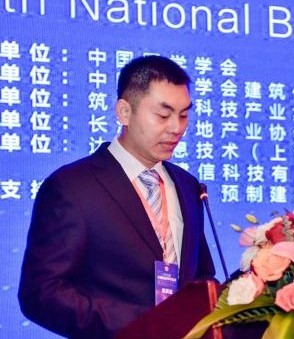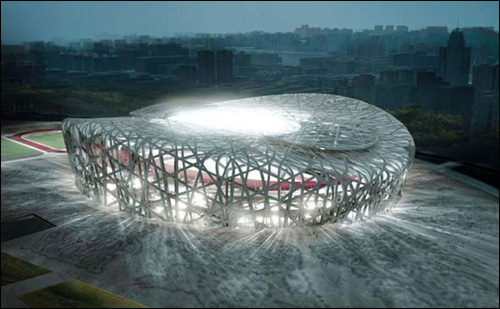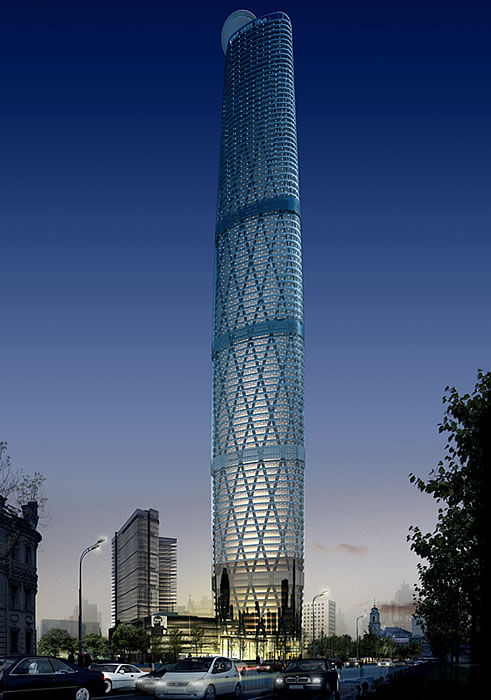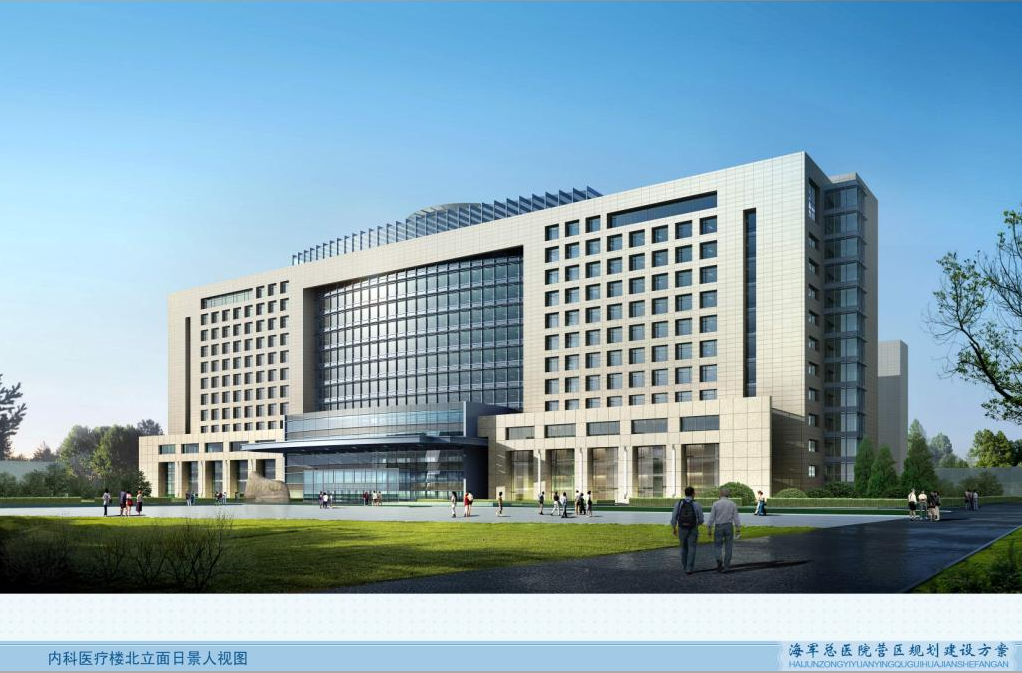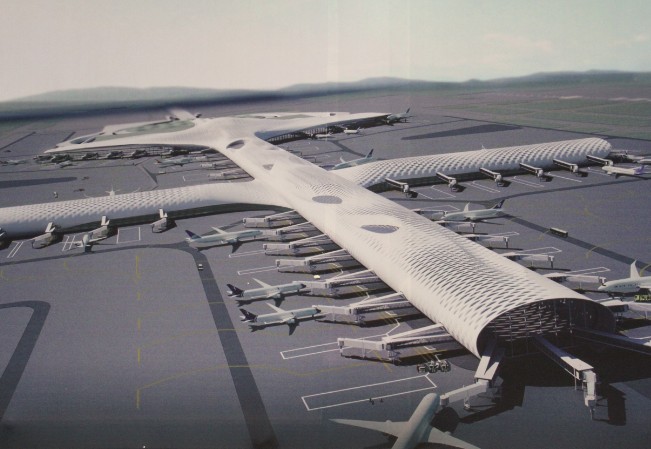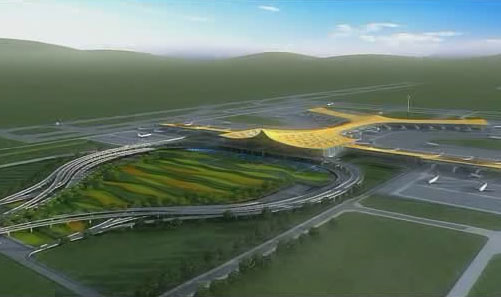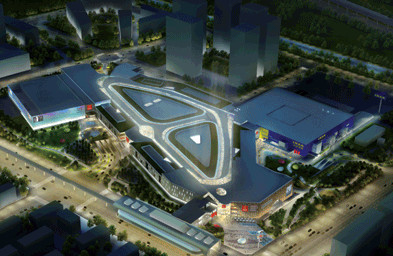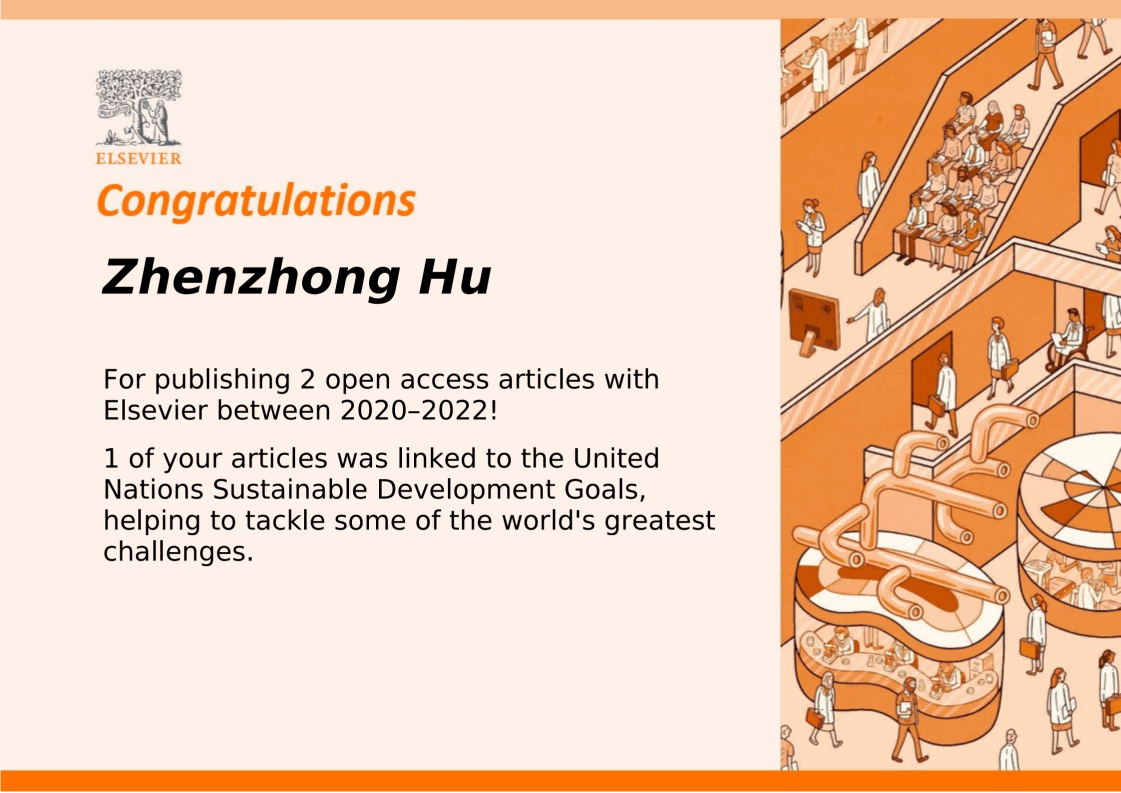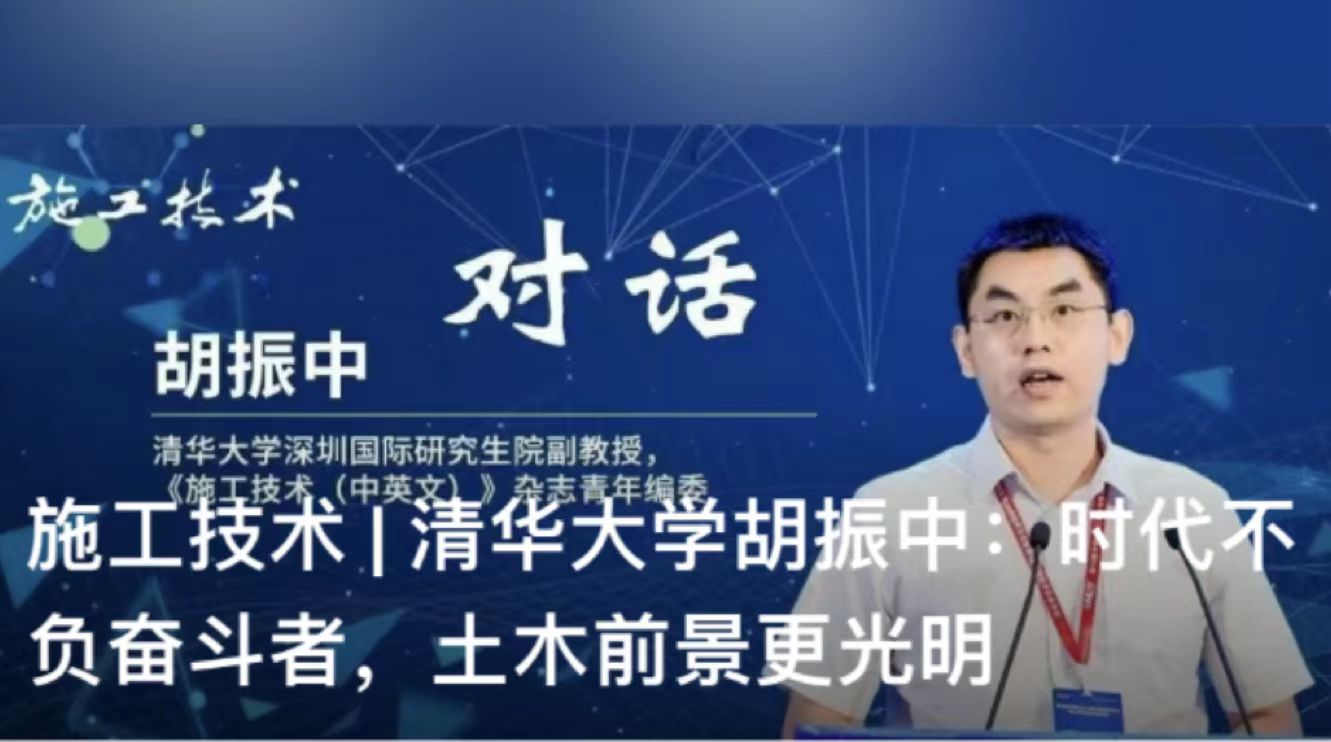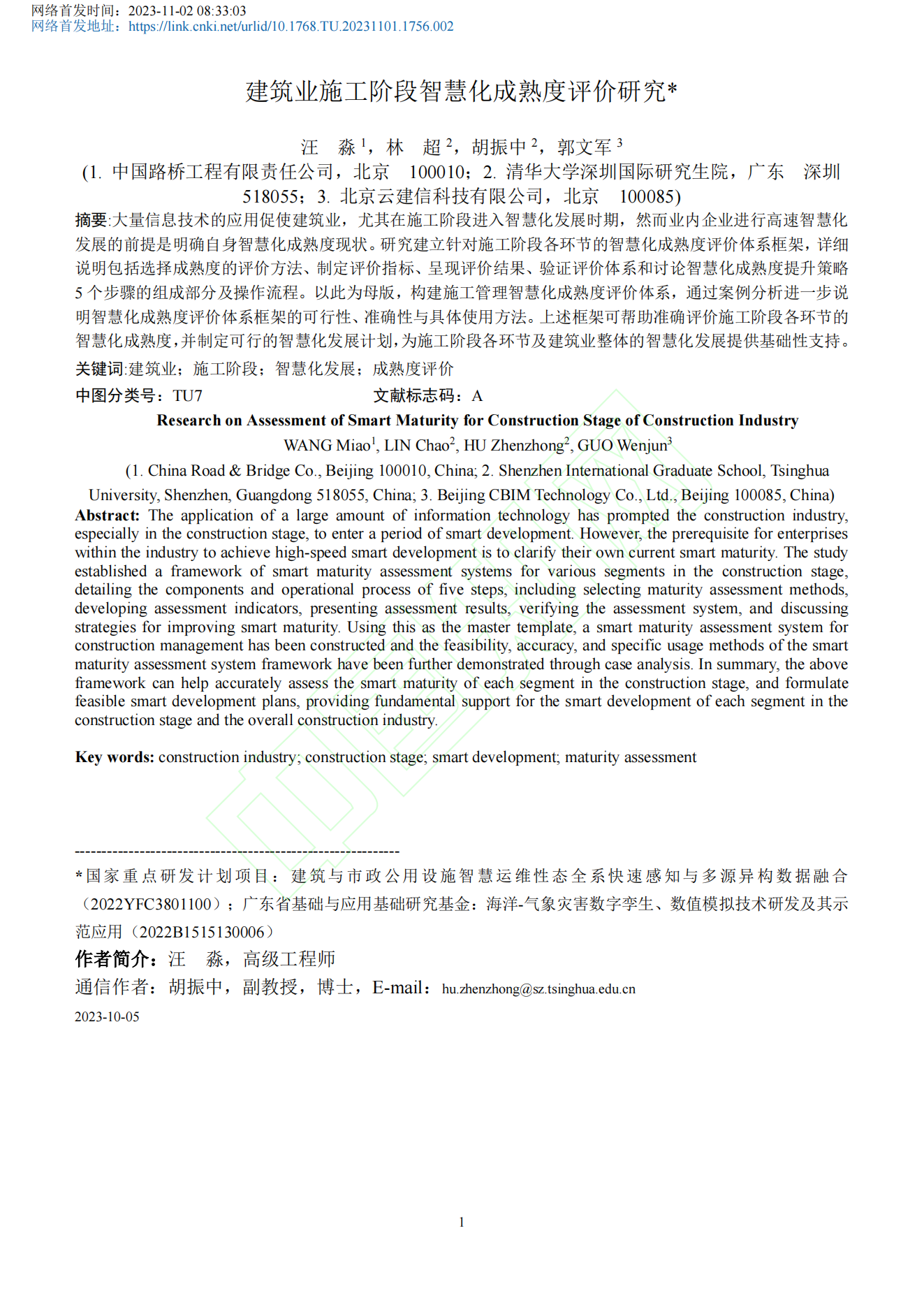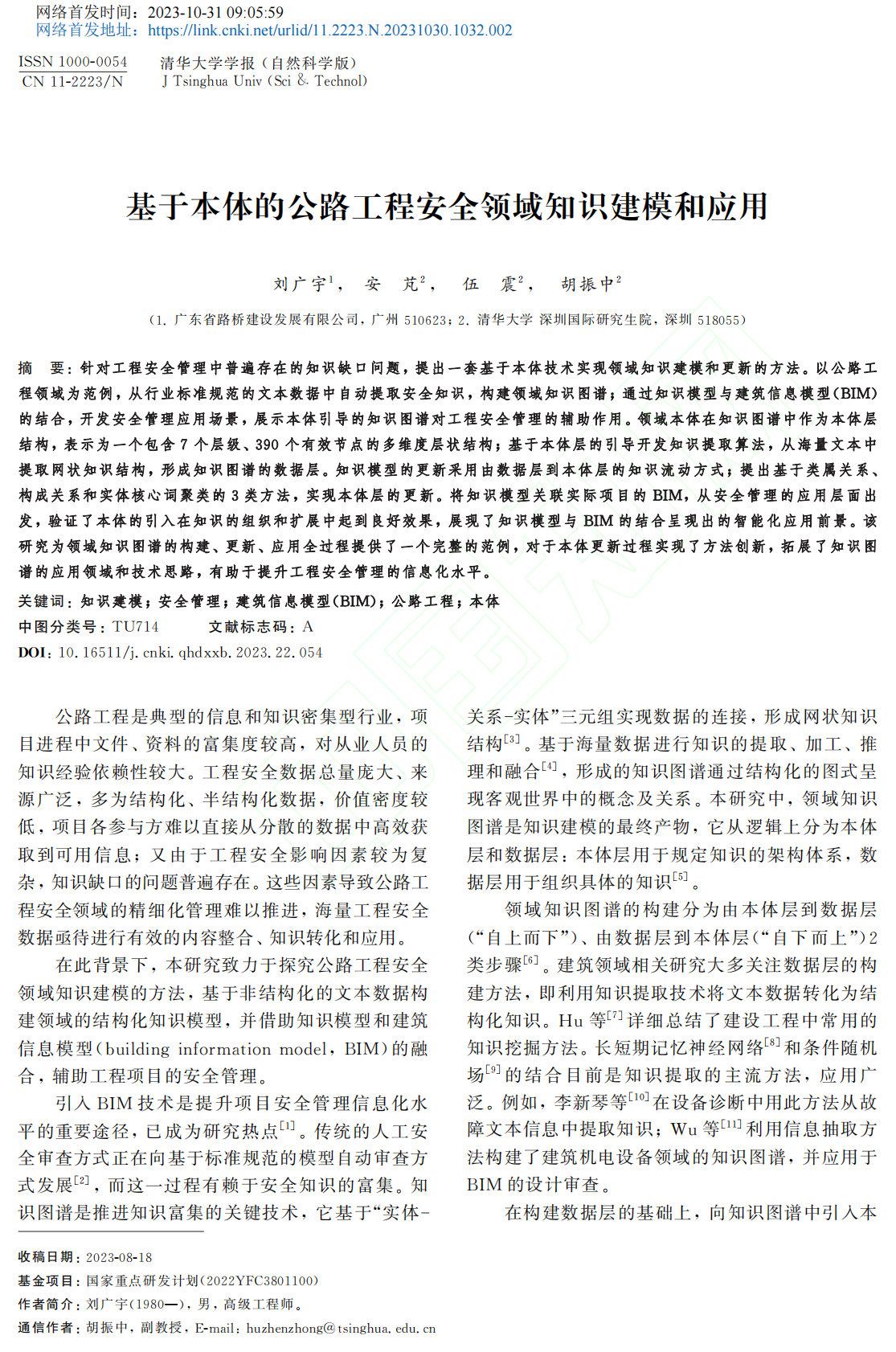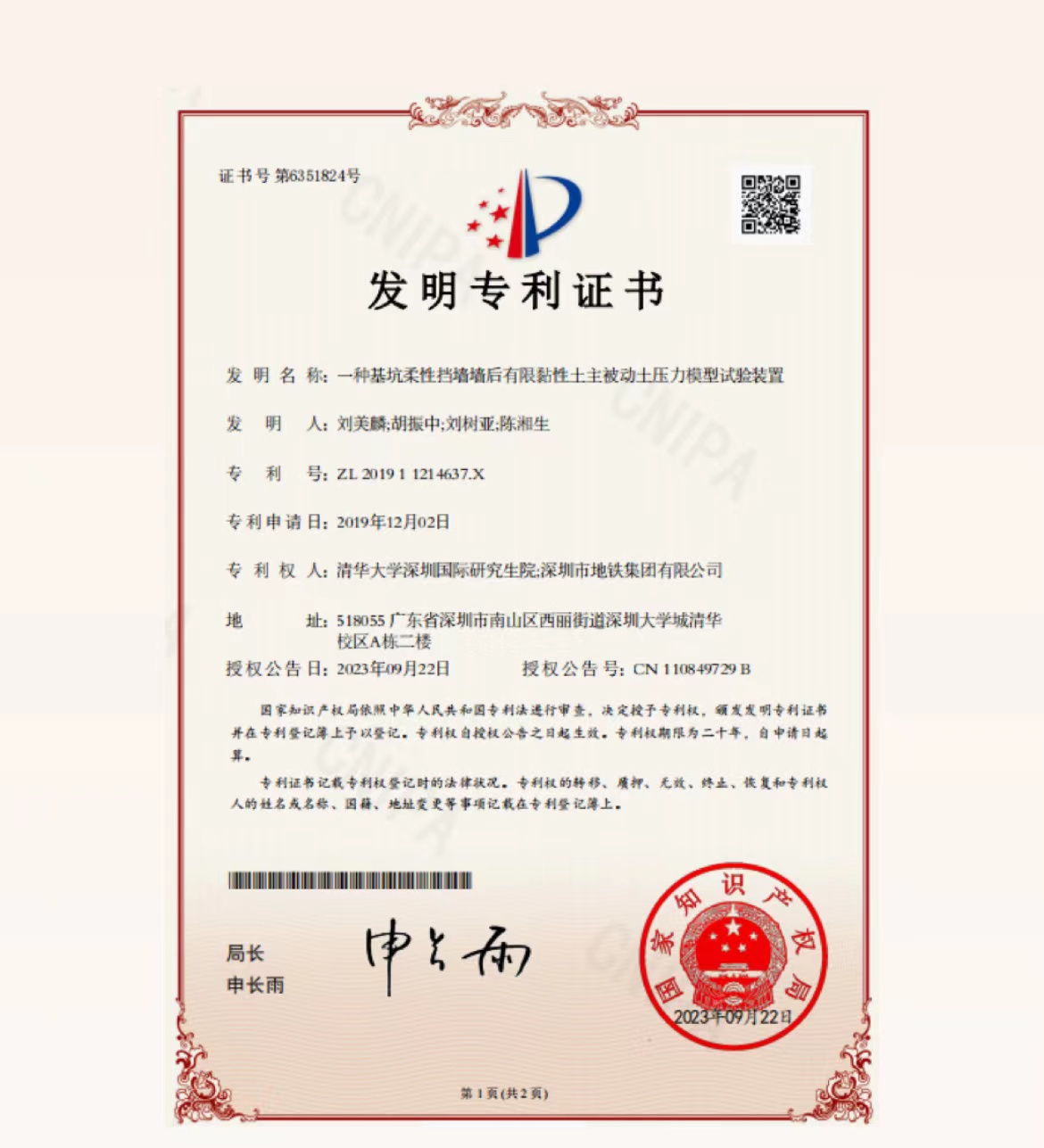"Ontology-based modeling and application of highway engineering safety knowledge" has been published in the Journal of Tsinghua University(Science and Technology) on CNKI.
In view of the common knowledge gap in engineering salety management, this paperaims to propose an ontology-based framework to achieve domain knowledge modeling and updating. Using the highway engineering field as an example, this paper demonstrates how safety knowledge can be automatically extracted from industry-standard text data to facilitate the construction of a domain KG. Subsequently, the safety management scenarios are developed based on the building information model (BIM), and the auxiliary role of intelligent knowledge in safety management is demonstrated to verily the effectiveness of the engineering application of the developed KG. This paper used the ontology-guided domaln knowledge extraction method to construct the domain KG and proposed a knowledg network-guided method to update the ontology. Specifically, a layered knowledge system with multiple dimensions was summarized as the ontology layer based on the management approach and the established standard specifications withinhighway engineering, Following the guidance of the ontology layer, a structured knowledge network acting as the data layer was extracted from massive text materials by developing a series of knowledge extraction procedures, Consequently, a knowledge-flowing method from the data layer to the ontology layer was proposed. Three categories of methods based on the essence and composition of entities and the clustering of the entity's core words were summarized to realize the automation updating of the ontology layer.Finally, combined with the developed highway safety information retrieval and application system , this paper demonstrated the organization and application of the constructed domain KG, thus verifying the effect of introducing ontology in the organization and deployment of knowledge. The developed ontology of highway engineering salety knowledge was featured as a layered knowledge system with seven levels and 390 nodes connected with ~ 300 000 valid entity nodes in the data layer, facilitating the creation and integration of the KG's logical structures. The proposed method for updating the domain ontology aided by over 1000 technical terms was demonstrated to be effective, with an increment of 51.5% in the expansion of the nodes to the ontology. The designed method of linking the ontology-guided domain KG with the BIM was validated for its feasibility through practical implementation within a real highway engineering salety management system, displaying the positive impact of ontology's guidance in the organization and expansion of knowledge. This paper concentrates on the domain of highway engineering safety and presents a comprehensive paradigm for constructing, updating, and applying a domain KG to demonstrate methodological innovation in ontology updating. The results extend the application scope and technical approaches of KG technology, thereby enhancing information technology level in engineering safety management. Moreover, the findings of this research can be used for BIM evaluation and safety guidance in highway engineering construction projects, thereby advancing the level of information technology in construction safety management.
Note: The first author of this paper is Liu Guangyu, senior engineer of Guangdong Road and Bridge Construction and Development Co., LTD. I am the corresponding author. The authors also include doctoral student An Peng and research group member Wu Zhen. The research results have been funded by the national key research and development program of China.
